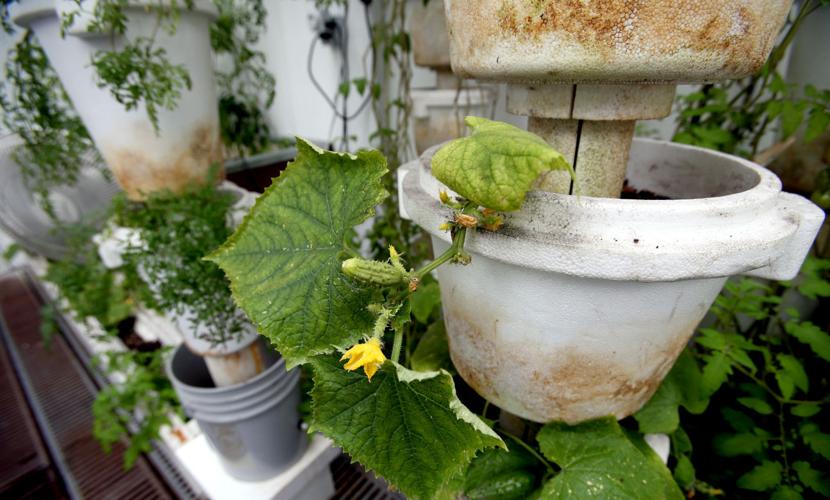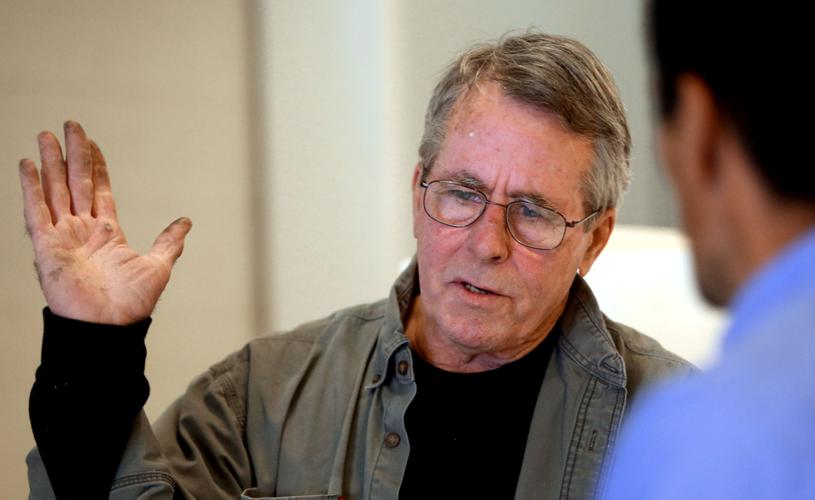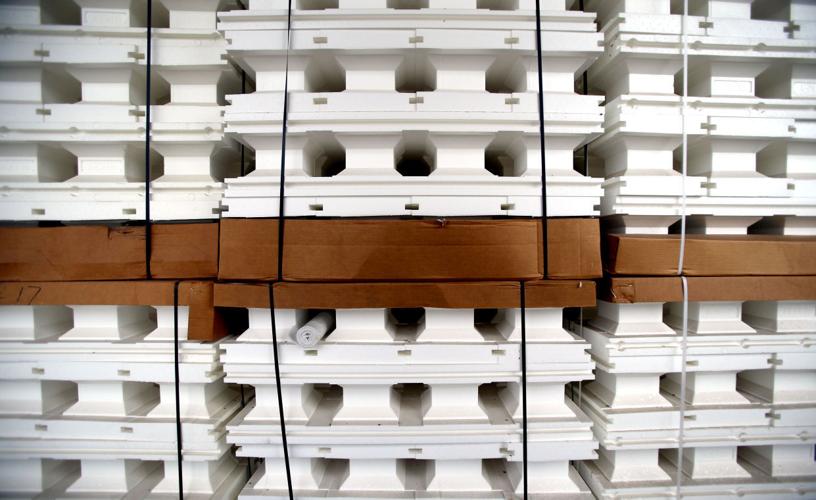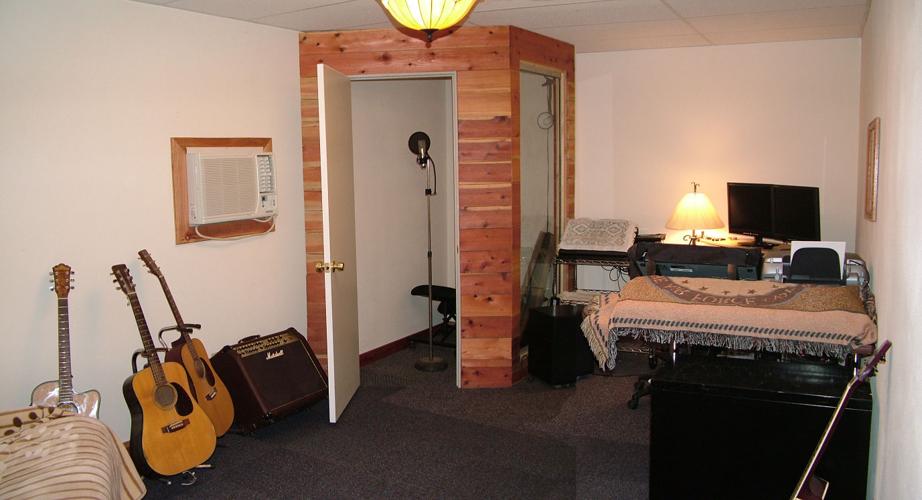Dave Taggett is taking that cliché about “building a better mousetrap” to a different level.
At his small manufacturing plant, hidden away on the northeastern edge of South Tucson, Taggett is trying to build a better greenhouse, a better walk-in refrigerator, and even a better brick oven with technology he’s developed over decades, all of it designed to be simple, reasonably inexpensive and durable.
Step onto the property at his business, Mikey Block, 501 E. 27th St., and you come across a 14-by-24-foot structure that is a working greenhouse but is capable of a wide range of uses. Step closer to the structure and you see the walls are essentially made of foam board.
It’s one of the many offshoots Taggett has come up with from his original product, Mikey Block, which is an insulated concrete form system that uses the foam material to cost-effectively and energy-efficiently build walls for homes and structures of similar size.
The greenhouse at Mikey Block is a lightweight structure that Taggett says can be put together quickly, without a lot of tools and without a lot of so-called elbow grease. One owner described receiving the building materials in a kit and having the walls up in a few hours with no other help.
“This little building is all foam and reinforced with steel,” Taggett said, standing in his greenhouse surrounded by recycled materials he uses for planters. In there, he grows, among other things, strawberries, tomatoes, carrots, basil and cucumbers. There’s even a small pool with tilapia, a tasty fish to some.
In the product he’s built as a greenhouse, Taggett also sees a small cabin, a storage area, a guesthouse, and in at least in one case, a recording studio at a cost of about $20 per square foot for the structure itself. The components of the structure — 6-inch thick walls, roof, and other needed accessories — are manufactured at the facility and shipped to customers who assemble them into what they want the structure to be.
“It’s not a big deal to put one of these together,” Taggett said. “It’s just a matter of a little bit of common sense, having a couple of stepladders, a cordless drill or two.”
Taggett provides detailed instructions, both written and on YouTube videos.
The prototype was built in 2006 for Jason Stone, one of Taggett’s local pals, who is using it as a recording and video production studio for his business, Hermit’s Lair Media, at his home in Three Points, west of Tucson. Stone is a musician who said he’s done some recording in the 12-by-20-foot studio with other local musicians.
“I was going to build a little Tuff Shed-type building,” Stone said, adding that he was a carpenter by trade before going into the recording and video production business. “In talking with (Taggett), he just designed this thing and it was just perfect.
“It’s like a little erector set. When he came up with that I kind of jumped on it. He’s one of the most innovative people I’ve ever met.”
Stone laid down a wood foundation for the structure, put on a shingled roof and siding on the outer walls for aesthetics. The parts are built to make electrical wiring easy. Stone said he installed an air conditioning unit for heating and cooling, which he said allows him to use the studio year-round.
“It is my office,” he said, adding that he generally spends 30 to 40 hours a week working in it.
Even though the structure is relatively lightweight, Stone said there’s no worry about one of the area’s famous monsoons sweeping through with a microburst to send it flying into the sky a la “The Wizard of Oz.”
“It’s really sturdy,” he said. “It’s not going anywhere.”
The sturdiness of the technology Taggett has developed has led to another product that will soon be hitting the streets.
With a pair of local chefs advising him along the way, Taggett has designed a lightweight foam base on top of which he sets a brick oven made with a form he developed using the foam material.
The base is a mix of throwaway materials — think of the foam packing that comes with a new computer or other similar component — some concrete fly ash and water. Once compressed, it produces a sturdy base that, combined with a knowledge of physics, will support a heavy oven. With the base being so lightweight, it makes the oven mobile, which is how Taggett’s chef advisers plan to use it.
“It’s not heavy. You can move it anywhere you want,” said Kevin M. Anderson, a local personal chef. “You can cook anything you want in it. People see this and say you can only cook pizza in it. But you can cook lamb, turkey, steaks, anything, cleanly and efficiently.”
Ideally, the oven would be set outside a restaurant, in a chef’s backyard, or it can be put on the back of a truck, which is what Anderson and his chef cohort Todd Eanes plan to do. They’ve already purchased the truck.
Along the same lines, Taggett has designed another relatively simple, lightweight structure that can serve as a walk-in refrigerator. The thickness of the walls and the resulting insulation mean the refrigerator can maintain a temperature from the mid-30s to the low 40s outdoors with a standard wall air conditioning unit attached to a temperature regulator that a business partner devised for Taggett. The regulator keeps the temperature of the air conditioner lower than if it were attached to a home.
He said the refrigerator uses about one-fourth the energy of a standard refrigeration unit.
“The whole thing about this little refrigerator, rather than having a commercial refrigeration unit, it uses a window A/C from Walmart,” Taggett said. “The energy consumed to keep this at 36-37 degrees is the same as running a 75-watt light bulb 24 hours a day.”
Standing in his self-contained greenhouse, Taggett expresses his bigger vision for the products he’s developing. “One of my dreams is to build — within the confines of the city of Tucson — a house that’s completely off the grid.”
And by “off the grid,” Taggett thinks beyond the common definition of not needing outside electric service.
“No foundation, no water, no gas, no electric, nothing,” he specifies. “Everything in this greenhouse runs on harvested rainwater. There’s never been a nickle’s worth of city water in here. And then we’ve got a photovoltaic array, so the water pump runs off the sun. To me it’s just fun, but there’s also a need for this.”










